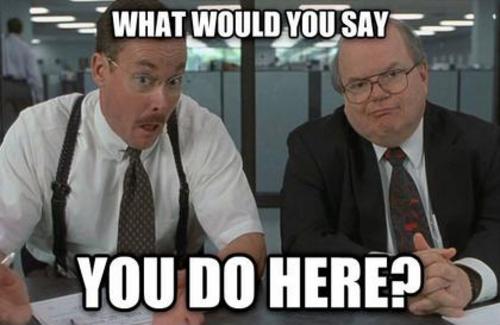
Effective Meetings
This is a recollection of thoughts on meetings and notes from one of my favourite books, high output management. Meetings have a bad name and people tend to nag about them. It doesn’t have to be like that.
Most of us have been in a situation where we wish we could think of a good excuse to escape from a never-ending meeting.

Meeting Types
People’s time is highly valuable, so all meetings should be purposeful and well executed according to type.
Not all meetings are the same. It’s important to be able to distinguish between a few basic types, to set clear expectations and apply principles to make them more effective.
Process-Oriented
Those meetings are regular ceremonies of the company. They can be considered the building blocks of a framework to coordinate work, establish team communication and collect employee feedback.
An example of a framework an organisation might claim to base its values on, is Agile™.
For the following sub-categories of process-oriented meetings, Ι’ll cite some of my notes to make them effective, but won’t go into detail of how they should be run.
One-on-One / Performance Review
This is a meeting between a manager / team-lead and a team member. It’s typical to have an informal tone. It should be considered the subordinate’s meeting with her agenda. The subordinate should be asked to prepare an outline, which forces her to think of issues to be raised upfront and also promotes accountability for the advancement of the meeting.
A small tip is to “Ask one more question” towards the end of the meeting. The subordinate should keep the flow of thought coming until you both feel satisfied that you have gotten to the bottom of the problem.
Standups / Sprint Planning / Backlog Grooming
The most common type of meetings. Important points here are to ensure they happen at the defined intervals and all essential information is transferred to the appropriate project management tools.
Mission-Oriented
Such meetings are usually held ad hoc and are designed to produce specific output. An example of a mission-oriented meeting is “Design an action plan for a mission to Mars”. This is the type of meeting which is more prone to derail and cause frustration.
Tips for fruitful mission-oriented meetings:
Timebox it
A meeting should have a predefined duration which should not be exceeded. Each topic must be discussed at most for a certain amount of time and if it requires more, participants can vote for its slot to be doubled (which will lead to some topic not being discussed).
Strive for punctuality and formality
It is criminal to allow people to be late and waste other participant’s time. Wasting time means wasting the company’s money.

Justify it / Have an agenda
I cannot stress enough how handy it is to have a document as point of reference for a meeting. Lots of meetings can be avoided by exchanging a few emails. Don’t be the person calling a meeting just to chat about something.
Invite selected people

It should be clear to everyone invited why they’ll be attending the meeting. Failure to do so leads to boredom, unnecessary opinions and even disputes. Remember that people are paid to attend meetings.
Set a meeting facilitator
A single person should be assigned to take on some preliminary preparation for the meeting and coordinate it. A person which this responsibility is commonly also called the chairman of the meeting.
Responsibilities
Before
- Prepare the agenda
- Determine the participants
- Share the agenda to all the participants. Some of them may be appointed with information gathering on one meeting topics.
- Ensure the participants approve and understand the agenda
- Book a meeting room (and let people know about it in advance). 💡 Tip : You can use a shared calendar for meeting rooms or some room booking software
During
- Ensure notes are taken
- Ensure each topic is discussed
After
- Verify the expectations of the meeting have been met and communicate the output / debrief.
Structure and Communicate the Output
Treat the output of a meeting as valuable structured information that has to be shared to ensure cross-team alignment and sense of direction among the participants.
You can file the output of all non-trivial meetings to a tool like trello.
A template for the output can be:
[Project: Mars Exploration]
Topics Discussed
----------------
## Decide Launch Date
* Dimitris suggested 2022-02-06 for optimal Mars weather conditions
## Pick a Pilot for the mission
* Dimitris said he should be considered, as he has experience with mars (chocolate bars)
------------
* [dimitris] Learn how to fly a spaceship
* [elon] Deliver BFR - deadline: 2022-01-01
Meeting Agenda
Below you may find a template for an agenda. You will find that in many cases a well planned meeting can be skipped altogether when the meeting’s output is achieved in preliminary asynchronous email communication.
[Project: Mars Exploration]
Date: Monday, September 7, 11:00 a.m
Where: Maniac Mansion Meeting Room
Subject: Spaceship Landing Site
Participants: Elon, Dimitris, Leela
Purpose: Determine the ideal location to land based on environmental
factors
Agenda Topics
-------------
## Underground Water Locations
Elon is our geology resident expert. He'll demonstrate his findings on
the most plausible locations where underground may be found. Extracting
underground water will be necessary to support a colony.
## Construction Considerations
Dimitris and Leela will share their research on agriculture. Matt Damon,
the first colonist, struggled with potato farming. A sustainable source of food will
enable the colony to grow.
Miscellanea
Decision Making
Decisions are the output of a process framed by six questions.
- What decision is needed?
- By when?
- Who should be consulted?
- Who decides?
- Who ratifies or vetoes?
- Who needs to be informed?
Managers need to bring together the right minds and discussions to get to a clear decision, and ensure support for the output, even from dissenters. Decisions should be made at the lowest competent level by someone with both detailed technical understanding and past experiences, both good and bad, from different implementation approaches. When no one has both, create a composite opinion from the people available.
Attention Handling
If you can’t manage the participant’s attention consider calling it off. Most of us have to deal with a constant flow of distractive notifications and we’re hooked on our devices. Tell people to have closed laptops and instruct them to not peek at their mobiles.
Remote first
Your team will probably have people working remote. A tip for a more unified experience is to have everyone (even people in the same office) join a conference call from their laptops as if they were remote. This also prioritises resolving early any issues with remote (timezones / teleconference infrastructure / process).
Found a mistake? Please submit a pull request or mention it in the comments.
